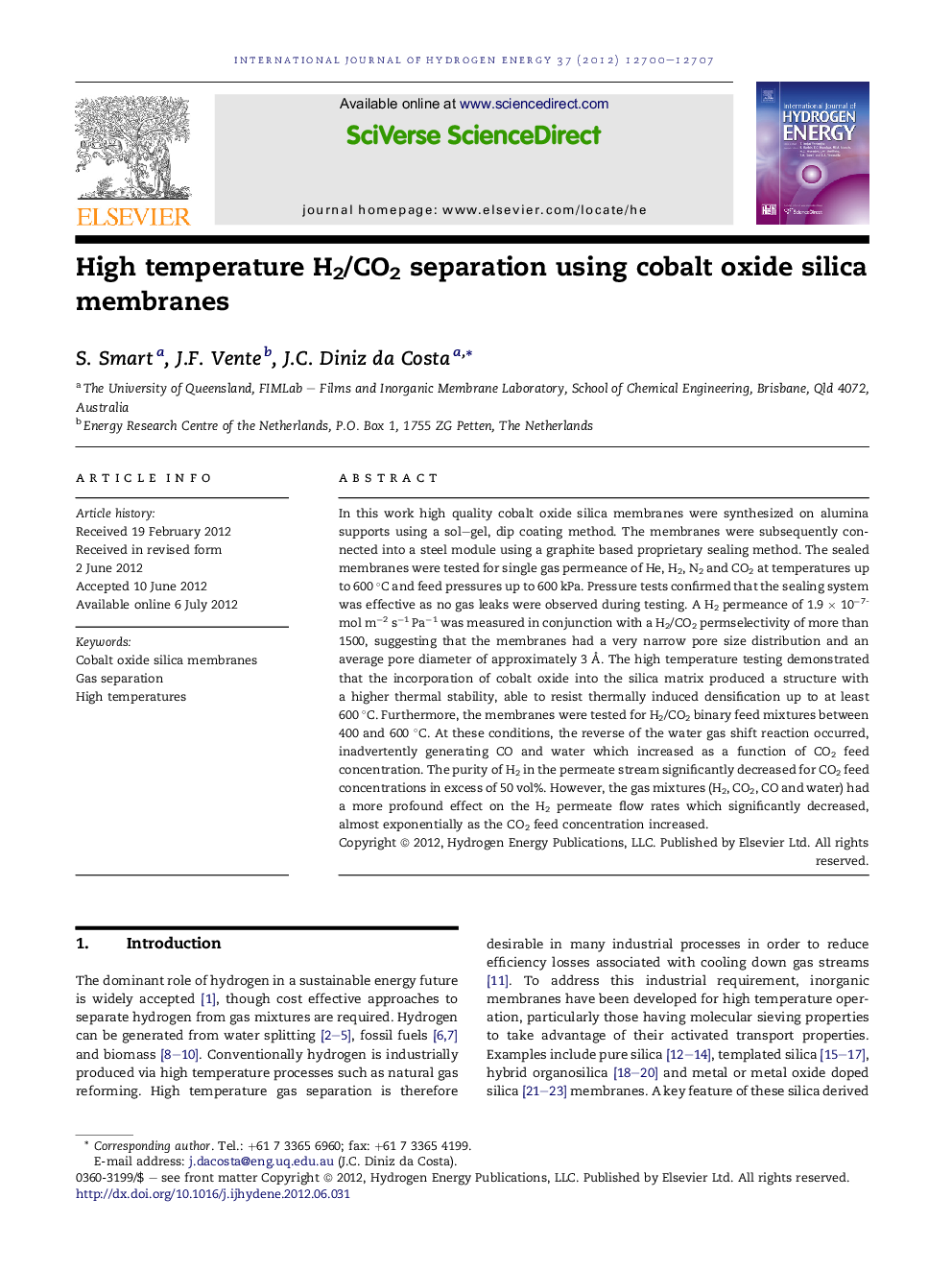| کد مقاله | کد نشریه | سال انتشار | مقاله انگلیسی | نسخه تمام متن |
|---|---|---|---|---|
| 1271108 | 1497552 | 2012 | 8 صفحه PDF | دانلود رایگان |

In this work high quality cobalt oxide silica membranes were synthesized on alumina supports using a sol–gel, dip coating method. The membranes were subsequently connected into a steel module using a graphite based proprietary sealing method. The sealed membranes were tested for single gas permeance of He, H2, N2 and CO2 at temperatures up to 600 °C and feed pressures up to 600 kPa. Pressure tests confirmed that the sealing system was effective as no gas leaks were observed during testing. A H2 permeance of 1.9 × 10−7 mol m−2 s−1 Pa−1 was measured in conjunction with a H2/CO2 permselectivity of more than 1500, suggesting that the membranes had a very narrow pore size distribution and an average pore diameter of approximately 3 Å. The high temperature testing demonstrated that the incorporation of cobalt oxide into the silica matrix produced a structure with a higher thermal stability, able to resist thermally induced densification up to at least 600 °C. Furthermore, the membranes were tested for H2/CO2 binary feed mixtures between 400 and 600 °C. At these conditions, the reverse of the water gas shift reaction occurred, inadvertently generating CO and water which increased as a function of CO2 feed concentration. The purity of H2 in the permeate stream significantly decreased for CO2 feed concentrations in excess of 50 vol%. However, the gas mixtures (H2, CO2, CO and water) had a more profound effect on the H2 permeate flow rates which significantly decreased, almost exponentially as the CO2 feed concentration increased.
► Cobalt oxide silica membranes were robust to operate at high temperatures 600 °C.
► Cobalt oxide resisted thermally induced densification of silica membranes.
► H2 permeance of 1.9 × 10−7 mol m−2 s−1 Pa−1 and H2/CO2 permselectivity >1500.
► The reverse of the water gas shift reaction occurred for H2/CO2 gas mixtures.
► The purity and fluxes of H2 decreased for CO2 feed concentrations >50 vol%.
Journal: International Journal of Hydrogen Energy - Volume 37, Issue 17, September 2012, Pages 12700–12707